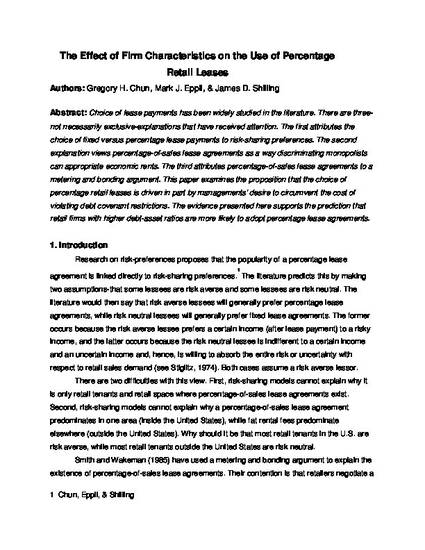
Choice of lease payments has been widely studied in the literature. There are three—not necessarily exclusive—explanations that have received attention. The first attributes the choice of fixed versus percentage lease payments to risk-sharing preferences. The second explanation views percentage-of-sales lease agreements as a way discriminating monopolists can appropriate economic rents. The third attributes percentage-of-sales lease agreements to a metering and bonding argument. This paper examines the proposition that the choice of percentage retail leases is driven in part by managements' desire to circumvent the cost of violating debt covenant restrictions. The evidence presented here supports the prediction that retail firms with higher debt–asset ratios are more likely to adopt percentage lease agreements.
Available at: http://works.bepress.com/mark_eppli/22/

Accepted version. Journal of Real Estate Finance and Economics, Vol. 27, No. 1 (July 2003): 25-37. DOI. © 2003 Springer Publishing Company. Used with permission.